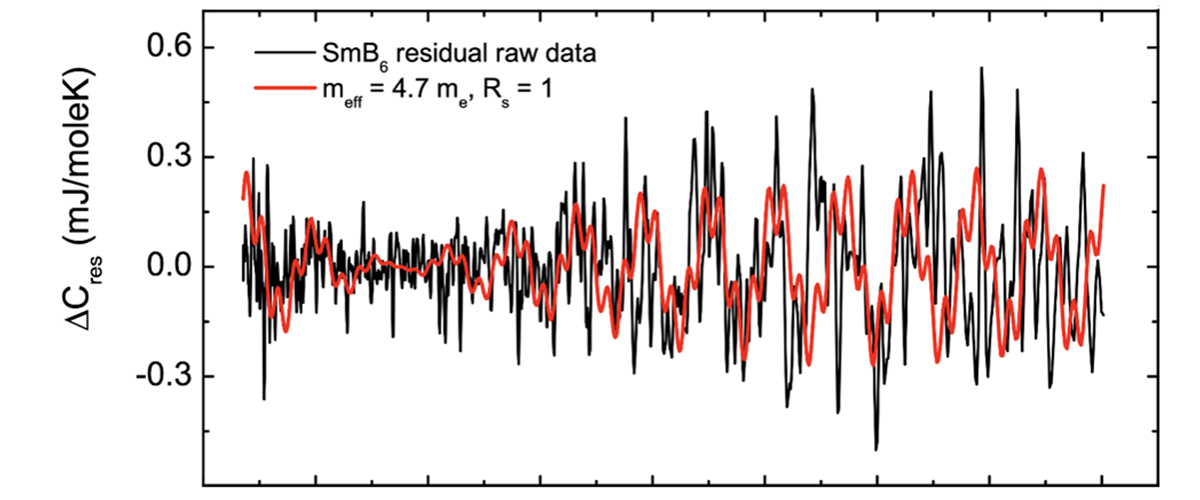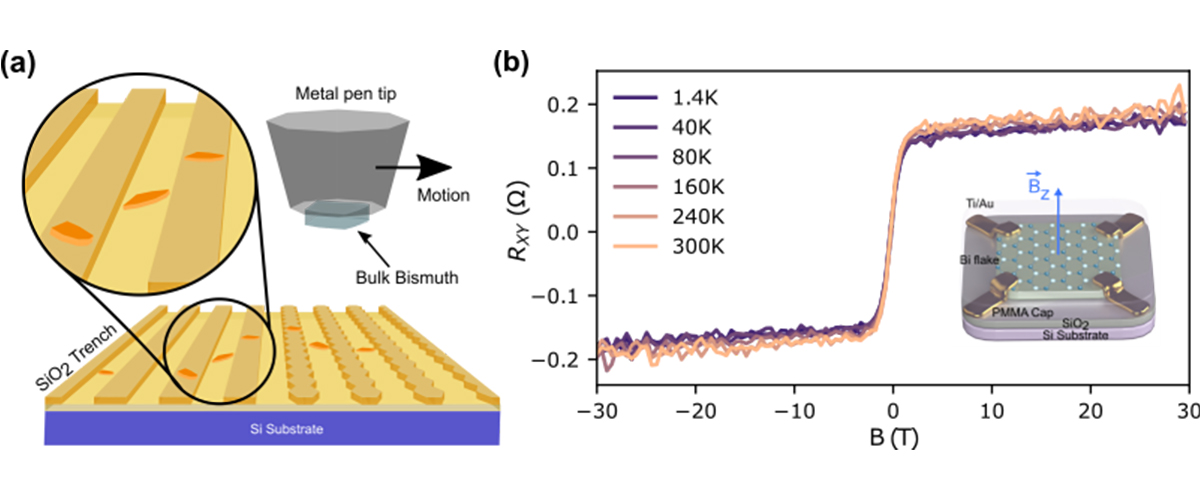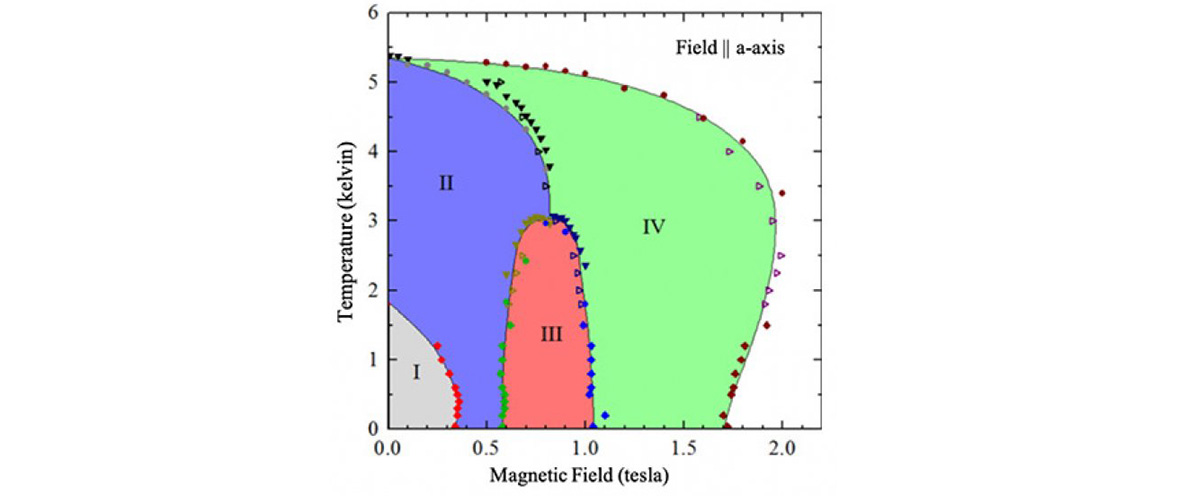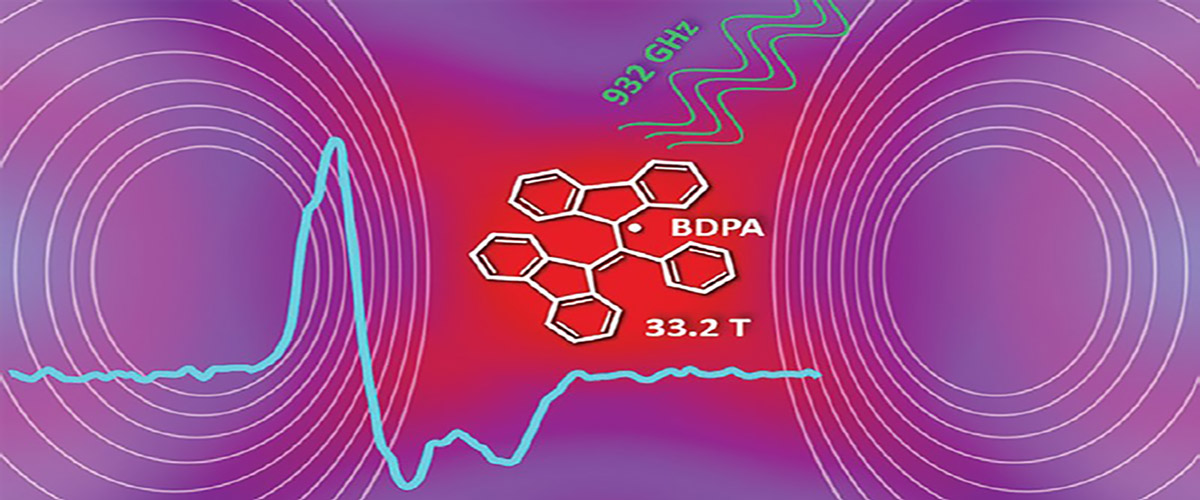What did scientists discover?
Measuring specific heat, scientists observed a phenomenon called magneto-quantum oscillations in an insulator - Samarium hexaboride (SmB6). Magneto-quantum oscillations are a type of rhythmic change in a material’s properties that vary as the magnetic field changes. These new findings confirm and expand earlier torque magnetometry measurements which also showed similar oscillations. This data strongly suggests that in SmB6, it's not regular electrons causing the oscillations, but special particles called electrically-neutral quasiparticles that act like electrons.
Why is this important?
Until recently, all materials that exhibited quantum oscillations could be categorized as metals. Quantum oscillations occur as energy levels of electrons in atoms cross a dividing line between occupied and unoccupied with increases or decreases to magnetic field. In an insulator, electrons are “locked” in fully-occupied energy levels with no ability to move due to an applied magnetic field. Since SmB6 is an insulator, it should not exhibit quantum oscillations. However, it does under these unique conditions. Scientists believe the quantum mechanics of SmB6 may help produce these bizarre quasiparticles that carry no electric charge, but have magnetic properties like electrons. Materials with these properties may advance technology yielding more efficient thermoelectric materials, quantum computing and other unique electronic devices.
Who did the research?
P.G Barre1, A. Rydh2, J. Palmer-Fortune3, S.T. Hannahs4, A.P. Ramirez1, and N.A. Fortune4
1UCSC; 2Stockholm Univ.; 3Smith College; 4National MagLab
Why did they need the MagLab?
Observing SmB6 magneto-quantum oscillations required very high magnetic fields & low temperatures coupled to a quiet electromagnetic environment. The thermal energy changes in the SmB6 crystal are extremely small and the MagLab’s high magnetic fields were critical for the research team to observe the quantum oscillation amplitude growth.
Details for scientists
- View or download the expert-level Science Highlight, Magneto-Quantum Oscillations in the Specific Heat of a Topological Kondo Insulator
- Read the full-length publication, Magnetoquantum oscillations in the specific heat of a topological Kondo insulator, in Journal of Physics-Condensed Matter
Funding
This research was funded by the following grants: G.S. Boebinger (NSF DMR-2128556); A.P. Ramirez (DOE DE-SC0017862)
For more information, contact Tim Murphy.






